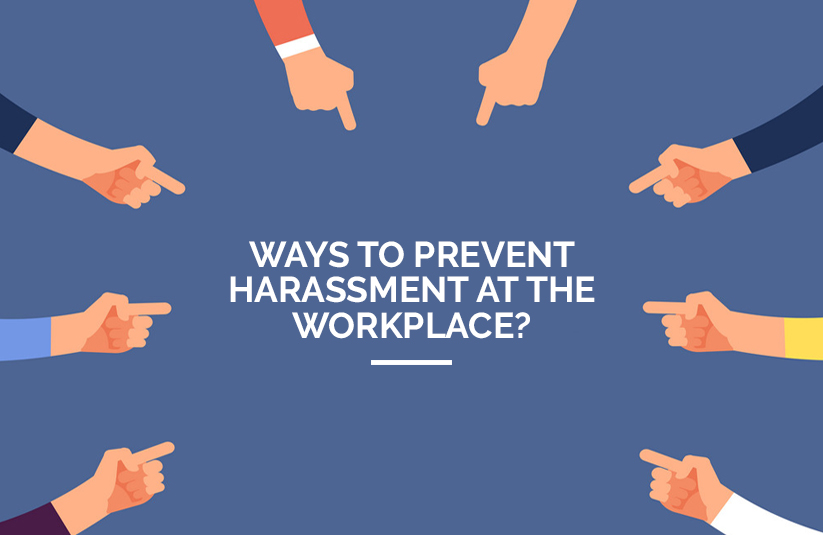Essential Steps for Preventing Harassment in the Workplace
As a business owner and employer, you have the supreme responsibility to maintain a workplace that is safe for your employees—regardless of gender. Ethically and legally speaking, preventing workplace harassment is your obligation. Speaking in business terms, employees love that their employer cares about them—leading to high moral, high productivity, and a healthy workplace—all good for the business.
It should be every employer’s priority to prevent sexual harassment at the workplace and bring on an environment in which men and women equality matters and when it comes to women there are many challenges of women empowerment.
In this article, we will look at the definition of sexual harassment and provide information on strategies that you could implement at the workplace to make it safe for your employees.
What is Sexual Harassment?
Sexual harassment can be defined as any unwelcome sexual advance made by any gender on the same or opposite gender—in the workplace that creates a threatening, hostile, or offensive working atmosphere. Which brings us to the next question.
What Can be Construed as Sexual Harassment?
Any conduct of a sexual nature that makes a female or male employee uncomfortable can be construed as sexual harassment. The term “sexual harassment” falls under a broad definition; hence it comes in many forms. Following are some examples of sexual harassment in the workplace:
- A manager hinting to an employee that he/she must sleep with him/her to get a promotion.
- An employee making condescending comments about female customers to his colleagues.
- An employee in a retail store feeling uncomfortable by the owner who regularly tells jokes which are sexual in nature.
- A salesperson fondling or pinching a coworker against their will.
- A secretary’s superiors demean her/him.
- An employee sending an email to colleagues that contain sexually explicit language or posting such content on the office board.
…and much more.
The harasser in question can be anyone—they can be the victim’s manager, administrator, or colleague. In some cases, an employer may even be held accountable for harassment by someone who is not an employee, such as a vendor or customer.
Who is Vulnerable to Sexual Harassment?
The unfortunate answer—anyone can be sexually harassed.
Sexual harassment is a gender-neutral offense. Unfortunately, in our country, the legal system and the law is tilted in the favor of women. It should be noted that men are equally, if not more, as susceptible to sexual harassment at the workplace as women.
Women can sexually harass men, and men can sexually harass women. It should also be noted that people of the same sex can also sexually harass each other. Men can sexually harass men and women can sexually harass women. However, according to recent data, an overwhelming majority of such charges are made by women saying that they were harassed by their male counterparts at the workplace. Employers are solely responsible for proving solutions to harassment in the workplace.
Do You want to know? Here are What Difficulties Faced by Women Entrepreneur
Strategies to prevent sexual harassment at the workplace and what to do if you are sexually harassed at work:
As a responsible employer and business owner, there are several steps that you can take to minimize the risk of sexual harassment happening in your office.
- Have a well-defined sexual harassment policy.
- During the orientation of employees, make it clear that your workplace doesn’t support harassment of any kind.
- Women empowering women is another strategy to avoid sexual harassment of any kind at the office.
- Define sexual harassment in your employee handbook.
- Be clear that in no uncertain terms will you tolerate sexual harassment.
- Be clear that you will take appropriate action against or fire any wrongdoers.
- Set out a procedure that is clear and easy for filing sexual harassment complaints.
- Make it clear that you will investigate any complaint to the fullest degree possible.
- Also, make sure that you will not tolerate retaliation against anyone who files a complaint.
- Preventing workplace harassment training session for employees is a must. Cover the definition of sexual harassment, employee rights, and the basics of complaint procedures during your training session.
- At the same time, conduct a training session for supervisors and managers. This should be separate from the employee sessions. The sessions should focus on educating the managers and supervisors about sexual harassment in the workplace and how to deal with it.
Read More about How to Build an Ecosystem to Support Women Entrepreneur
Our Business Ladder is a business development consultant and a business consulting firm, specializing in market research and business advisory. We help startups and established businesses alike. Got an idea? Contact us today and we will help you build your dream business!














Does your organization have specific training, protocol, and procedures in place to inform, prevent, and document the sensitive issue of workplace sexual harassment?
Greetings from Ourbusinessladder! Thanks for your comment. We are more than happy to assist you in your query. pls could you share your details in our contact form?. we will get back to you for detailed discussion and take it forward shortly. You can also reach us at +91 9655498877.